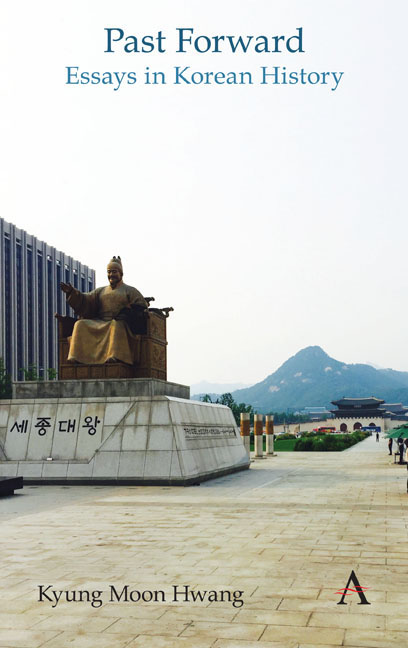Book contents
- Frontmatter
- Contents
- List of Figures
- Foreword
- Chronologies of Korean History
- Themes
- Acknowledgments
- Note on Romanization and Spelling
- Part I Circulating History
- Part II Durable Traditions
- Part III Ancient Remains
- Part IV Dynastic Depths
- Part V Modern Origins
- Part VI Challenges of Nationhood
- 30 Korea's Past in Light of Brexit
- 31 Openness and Exclusion
- 32 The North Korean View of History
- 33 Another Way to View National Division
- 34 The First National Assembly Elections
- 35 Who Started the Korean War?
- 36 Textbooks and Competing Nationalist Histories
- 37 The Complexities of Memorial Day
- 38 Adoption's Spotlight on Korean History
- 39 Questioning Monuments
- 40 Taking Ownership of the Past
- Part VII History Makers
- Part VIII External Presences
- Part IX Trials of Modernization
- Part X Gripped by the Past
- Index
38 - Adoption's Spotlight on Korean History
from Part VI - Challenges of Nationhood
- Frontmatter
- Contents
- List of Figures
- Foreword
- Chronologies of Korean History
- Themes
- Acknowledgments
- Note on Romanization and Spelling
- Part I Circulating History
- Part II Durable Traditions
- Part III Ancient Remains
- Part IV Dynastic Depths
- Part V Modern Origins
- Part VI Challenges of Nationhood
- 30 Korea's Past in Light of Brexit
- 31 Openness and Exclusion
- 32 The North Korean View of History
- 33 Another Way to View National Division
- 34 The First National Assembly Elections
- 35 Who Started the Korean War?
- 36 Textbooks and Competing Nationalist Histories
- 37 The Complexities of Memorial Day
- 38 Adoption's Spotlight on Korean History
- 39 Questioning Monuments
- 40 Taking Ownership of the Past
- Part VII History Makers
- Part VIII External Presences
- Part IX Trials of Modernization
- Part X Gripped by the Past
- Index
Summary
The tragic 2017 suicide of a Korean-born adoptee from the United States prompted uncomfortable reflection in several ways, including on the history of “undesirable” Korean children. This was the term used by a doctoral student of mine who wrote her dissertation on Korean orphans, vagrant children, and others who came to be identified, educated and regulated in the modern era.
Societies have always had to account for children in such unfortunate circumstances, and most modern societies developed systematic ways to attend to them, a process usually led by the state. In cultivating people to become proper, loyal citizens, the modern state gradually institutionalized the methods of schooling and reforming undesirable children. Charities and religious orders also did their part, and authors and journalists played a key role in making such children visible to the larger public through media such as newspapers, films and novels. Classic works of literature, such as Charles Dickens's “Oliver Twist,” featured the orphan, for example, as a metaphor for the disruptions of modern life.
In Korea as well, orphans have played an outsized role in mass culture that transcends their real numbers. This is particularly striking because the traditional Confucian family system seemed unable to treat orphans and other such children as normal members of society. Before the late nineteenth century, most of these children were expected to be taken in by relatives, even if they were distant, and the state appears to have offered few institutional means to take care of them. With the arrival of Western missionaries in the midto late nineteenth century, orphanages and special schools began to appear, which became models for Koreans in setting up their own institutions.
The modernizing state followed suit at the turn of the twentieth century by establishing government-run orphanages and reformatory schools. And in the Japanese colonial period beginning in 1910, the state pursued a more systematic approach that sought to intervene in the workings of private orphanages as well. Whether public or private, these institutions all sought the same thing: to take these children off the streets and place them in settings that would “correct” their life path toward that of good citizens.
- Type
- Chapter
- Information
- Past ForwardEssays in Korean History, pp. 111 - 112Publisher: Anthem PressPrint publication year: 2019

